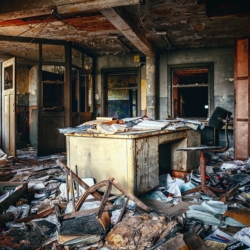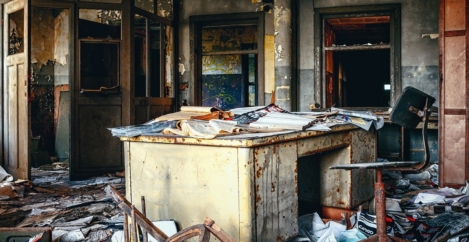November 19, 2024
The bill for upgrading office buildings worldwide could hit £1 trillion
 A significant proportion of global office space is at risk of obsolescence, with up to £1 trillion required to revitalise aging office buildings, according to a new report from real estate firm JLL. The report, titled Opportunity through Obsolescence, sets out to highlight the challenges posed by outdated structures, increasingly stringent regulations, and shifting tenant preferences, but also identifies opportunities for property owners and cities to create long-term value through investment and adaptation.
A significant proportion of global office space is at risk of obsolescence, with up to £1 trillion required to revitalise aging office buildings, according to a new report from real estate firm JLL. The report, titled Opportunity through Obsolescence, sets out to highlight the challenges posed by outdated structures, increasingly stringent regulations, and shifting tenant preferences, but also identifies opportunities for property owners and cities to create long-term value through investment and adaptation.
JLL’s research claims that roughly half of the 776 million square metres of office space across 66 global markets will need substantial upgrades in the near future, requiring an estimated investment of between $933 billion and $1.2 trillion. Europe is particularly affected, with 80 percent of its office buildings over a decade old. Approximately 109.6 million square metres of European office stock are expected to need immediate investment to meet tenant demands and regulatory standards, with 8.5 percent of this total in London.
London is among the cities most at risk of large-scale regulatory non-compliance, with 9.4 million square metres of office space potentially stranded under moderate scenarios. Retrofitting costs for the capital are estimated at between $21.4 billion and $43.6 billion. While London has seen a moderate influx of newer developments, with 14.5 percent of its total office inventory built since 2020 or under construction, its vacancy rate stands at percent.
JLL’s Phil Ryan, Director of Global Research, City Futures, emphasised the need for a holistic approach to tackling obsolescence. “Property owners and cities must proactively assess outdated assets, considering factors such as building age, design, and location, to unlock significant value and drive returns. Collaboration among stakeholders is essential to align with evolving preferences and regulatory requirements,” he said.
Sustainable growth
The built environment is responsible for up to 42% of global annual emissions, creating mounting pressure on building owners to decarbonise their assets. Retrofitting efforts are crucial to achieving net-zero targets, with 86 million square metres of office space in major cities requiring near-term investment due to regulatory tightening. While initial retrofitting costs can be high, they offer long-term benefits. JLL estimates that energy savings from whole-building retrofits could reach $31 per square metre annually, translating to $2.7 billion in energy cost reductions across at-risk markets.
Geographic concentration of emissions underscores the urgency of retrofitting. Cities such as London, Paris, Seoul, and Tokyo account for a significant proportion of emissions stemming from the built environment. Retrofitting in these areas not only meets environmental goals but also enhances the competitiveness of urban spaces in attracting tenants and investors seeking sustainable solutions.
Changing needs
Beyond regulatory pressures, shifting tenant demands are reshaping the commercial real estate landscape. There is a growing appetite for modern, amenity-rich spaces that foster productivity and community. In the US, strategies often involve converting office spaces to residential or mixed-use developments. In Europe, where structural vacancies are generally lower, targeted building upgrades are proving effective in revitalising business districts and attracting workers back to urban hubs.
Cynthia Kantor, CEO of Project & Development Services at JLL, remarked, “The commercial real estate sector is at a critical juncture. By addressing the challenges of obsolescence head-on, we can not only create a more resilient built environment but also unlock the full potential of existing assets for future growth.”














